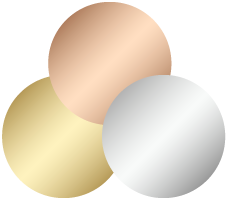Considerably rarer than gold, platinum jewellery makes a statement of sophistication, elegance and tells of a discerning eye.
Alluring and luxurious, the deep, silver-white hue of platinum is the perfect partner to diamonds, which shine brightly against its time-worn patina and cool, contemporary tones.
It’s also much more robust in its pure form than 24ct gold, which means less alloy needs to be mixed into the metal to make it suitable for use in jewellery. It’s the purest precious metal used in jewellery - You’ll find most platinum pieces are either 90 or 95% pure, usually indicated by a 900 or 950 hallmark stamped inside the piece.
This purity and resistance to damage, along with its unique time-worn patina, means platinum became a stalwart of the intricate filigree in Art Deco era designs. Now, platinum has become a very popular choice for engagement and wedding rings.





